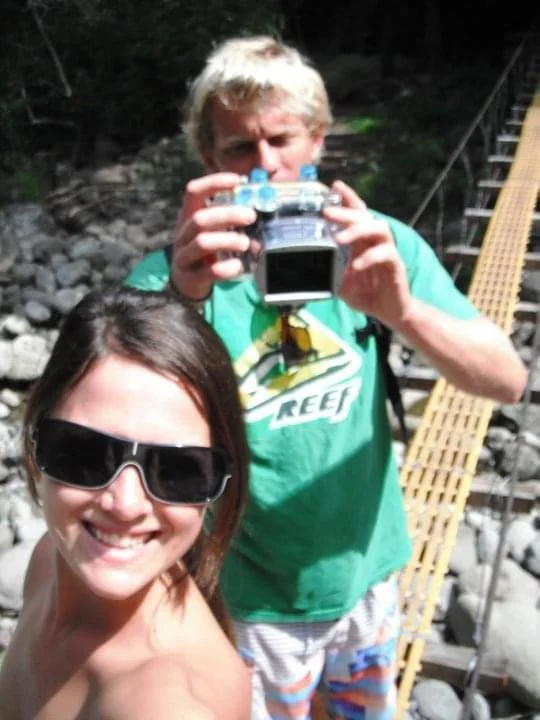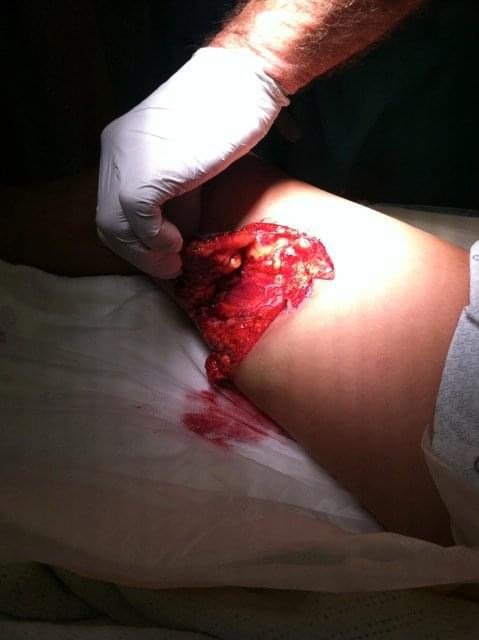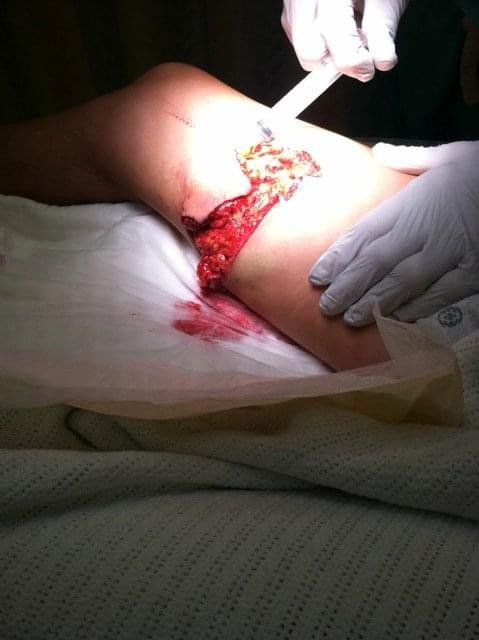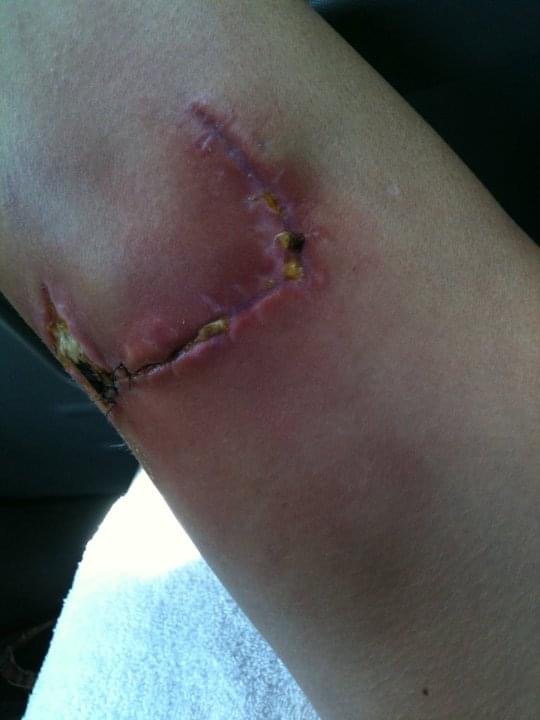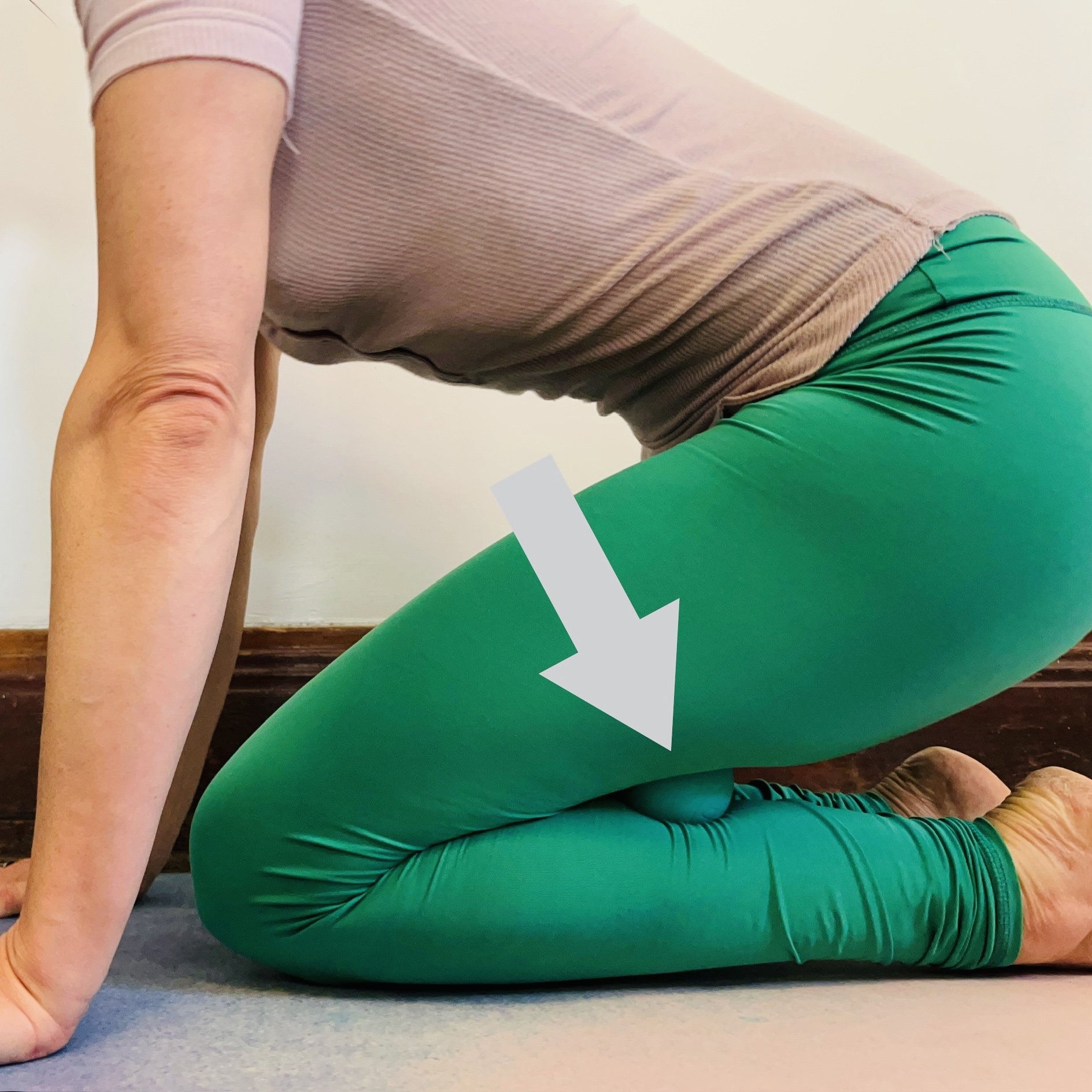Rough Waters
When I was 26 years old, I was in a bad surfing accident. I mean, really bad (graphic photo warning). I had just returned from six weeks traveling in Ethiopia of which four weeks I was incredibly sick with a sky rocketing temperature of 104 and a state of delusion with physical hives. At 5’7” I weighed an all time low of 110 pounds. A weight unheard of for me as a strength-based athlete. I remember feeling like a rag doll on dog walks with my 70-pound yellow lab. A feeling unheard of for me as a strength-based mentality.
Before the accident in Ethiopia
In retrospect, like a slow-motion scene where everything is already in play and you’re forced to watch without being able to stop it like water slipping through the cracks of a clenched fist, I can see how the events were bound to play out that day. Hindsight is 20/20 they say.
Day of the accident about an hour before.
Location is everything they say when it comes to business. Location was part of the inevitable dominos of this accident as I paddled out over low waters and high reef. Patience is a virtue they say. Patience I lacked as I eagerly took a wave too soon, too shallow.
Back to our slow-motion scene…I turn too eager to catch the first wave. I’m not ready. I’m not in the right spot. If I miss it, no big deal, it is small, I’ll just turn again and resume paddling out. They also say most accidents happen within five miles of your home because that’s when you lose present focus and let automatic focus take over. It makes us go through the familiar motions without complete conscious awareness. So things that feel familiar and easy become things where accidents can slip in. A difference between defensively driving and cruising.
When a wave peaks and creates the slide on which we surf, we say that the wave breaks. Well, that wave break broke me. Let me throw a bunch of surf language at you really fast and you can imagine the surfer accent “dude” and such for fun. I got tossed by that wave (I think you can imagine what that means). I pearled, meaning my board took a nosedive straight down into the reef. The nose of the board is the front point. As my board dives into the water, I am attached to it by the leash. I’m trying to stay horizontal and protect my head, so I don’t hurt myself on the reef. Isn’t it ironic that my board was the one hurt on the reef instead and in turn it was my board that hurt me? I suppose by a chain of events the reef hurt me as well? Choice and consequence and like I said and they say, hindsight is 20/20.
Flash back to our slow-motion scene, I’m in the water with white wash and chaos. I feel the tug of the leash as my board ricochets off the reef flying back towards the sky as if desperately seeking a gulp of air. Then, like a plunging bungee jumper the force of the ricochet and the whipping pull of the leash yanked the board back in the direction of the attachment. That would be me and my leg. The board struck me hard. I didn’t know yet how severe the strike was as I had rational thoughts and dialogue running through my head. I remember the specific thought and words I put to it, “that’s going to leave a bruise.” Sever physical trauma and adrenaline have a way of masking the pain after a certain point.
And scene! Slow motion subsides with the break of the wave and I come up to find my board during the lull. I place my hands, arms and chest on and against the board. I’m about to use my upper body strength to lift and haul my lower body back on my board but a strange thing happens. I can’t move my leg. That’s strange I think, I know I’m going to have a massive bruise and all but I cannot even connect to my leg to get it to move. The rest of my body did the work and dragged my leg along with it.
I’m back on my board, belly down like in sphinx pose. I look behind me to assess the damage. Shit. My right thigh is filleted open. I’m a perfect medical study to show students the layers from skin, through adipose to the clean shine of the muscle. I look forward, the broken pointed nose of my fiberglass board is the perfect destructive weapon.
I am not alone that day. My future ex-husband and babies daddy is a ways over paddling out. You should know that he is cursed and if you snowboard or surf with him you might get injured though there is no way that I can prove it has anything to do with him at all. But I do know that a decade later in a completely different state another friend will go surfing with him, have a different accident happen to them and they will be left with a similar scar to my own.
I yell his name. He doesn’t hear me. I try again…and again. He looks over. I’m waving for him to come and yelling. He’s looking at me and then looking out at the surf. He yells to me to come towards him. I yell, NO COME HERE. Again he looks out at the water like a dog that really wants to go run but its owner is sternly telling him to come here now. I see the defeat in the slump of his head and he comes my way. As he gets closer he is talking, I hear words being thrown out like come this way bla bla bla. I hear annoyance that I’m not reacting to those requests. Finally, he is in front of me.
Here is the other thing about severe physical trauma; our brain protects us from what it cannot handle or things we cannot handle. I was the calmest person in the chain of events that day. I tell him, listen, I need you to help paddle me in. He’s looking really confused with a hint of bewilder. I continue, before you get behind me, I need you to not freak out. Okay okay, roll of eyes, so over this already I can see his face but not his mouth saying. Okay, go behind and help push and I’ll paddle.
He is defeated at this point, so he paddles behind me and immediately forgets my one instruction not to freak out. He is yelling and frantic and telling me what has happened to which I say, “I know! I know! Just push me.” I can feel my upper body getting weak as I attempt to help with my paddling. My entire body is sinking into shock. But not enough shock to prevent reflexive reaction. As he gives the final push to float me onto shore and sand, without thinking and with him yelling, “Don’t stand up!” I attempt to stand up and collapse. There are only a few tourists on this particular beach and they are all watching and one is yelling, “She was attacked by a shark! She was attacked by a shark!” Isn’t it funny how we repeat exclamations? I mean it makes sense; you want to be heard because it is really important.
Now I’m being carried and set in the back of a Honda Element, a box like vehicle. We didn’t call the ambulance because we had a single lane road with a mountain on one side and cliff on the other in between us and the hospital and service was scarce. The ambulance would have to travel both directions to get me to the emergency room, or we drive the one direction straight there. We have taken every beach towel in the vehicle and wrapped them around my one leg. The entire drive he is talking to me and trying to get me to talk back so I won’t pass out from the shock. I’m actually in a pretty calm albite loopy state at this point.
We pull up to the emergency room and he runs inside to get someone and tells them to bring a wheelchair. They open the back double doors and I’m sitting there casually with a ton of towels but no signs of emergency. No visible blood seeping through, no thriving and screaming. So, they all look at me and each other and someone says, “So you need the wheel chair?” Implying, here you go…you can come out and sit in it now. “Yes,” I say, “But I need you to put me in it.”
They wheeled me inside and placed me in a waiting space. It felt like a long time before someone wheeled me into a room to ask questions. It felt like they seemed bored. I remember their back to me as they stood at a computer asking me basic questions about information like my name etc. I remember she finally turned around, looks down at me and says, “I assume the wound is under the towels?” To which I say, “Yes.” She responds, “Can I take a look?” To which I say, “Yes BUT, I’m going to look away because I’m trying to stay calm.” She says, “Okay…” and I mean every one of those ellipsis periods. It sounded like, “Oooooookaaaaayyyyyyyyy.” And though she didn’t roll her eyes, it sure sounded like it.
I look away. She removes the towels and finally joins the party. “OH MY GOD! I AM SO SORRY! TAKE HER TO TRAUMA TWO! TAKE HER TO TRAUMA TWO!” Again, that repetitive exclamation. There was no illusion of an unnecessary cry for help after this point. Another thing that can happen is that in the face of severe trauma to oneself, you can remain the calmest person in the mix and on top of that even laugh and stay patiently polite.
Things became rapid, no more slow-motion scenes from here on out. Instead, fast clips split together. “Will she lose her leg?”
“Don’t ask me that right now.”
“Can we let the nursing students observe, this is the worst longboarding accident I’ve seen at Maui Memorial Hospital.”
“Sure.”
A room full of students (I think their scrubs were a shade of burgundy).
A grey-haired older woman with a lamb puppet.
“Mind if I come in? Could you use a smile?”
“I’m fine, but he could probably use some cheering up.”
“Can you call my dad, let him know you’re my boyfriend and tell him what happened?”
“We need to pressure wash out the wound to make sure there isn’t fiberglass left inside before we sew it up.”
They gave me two doses of morphine. I still felt the pressure washing.
I would still end up with a gnarly infection I’d fight through pregnant in the weeks to follow.
No, I didn’t know I was pregnant.
I named him Calder, which means rough waters.
The car ride home.
Pull over.
Puke.
Pull over.
Puke.
Roommate helps boyfriend carry me up the stairs and put me in bed.
Now the opposite of hindsight and slow motion, we fast forward.
My son is now 12 years old which means this accident happened about 13 years ago. The lasting damage is nerve damage which has residual effects, requires constant maintenance and one incredibly annoying and perpetual side effect: restless leg syndrome.
This accident was a catalyst for so many things. For those who believe in things happening for a reason, fate, God’s plan or meant to be you’ll find the feel good, hallmark part of the story here. I don’t know if I believe all of that. I think I believe everything and nothing at the same time which probably makes little sense. I do believe in butterfly effects and forks in roads. I love the idea of parallel universes and pick your own story by what you do with what has happened to you.
I chose to heal from the injury while simultaneously building a baby by training for a full triathlon. I spent a lot of time on Baby Beach on Maui, swimming laps in the lagoon, up and down booty hill, running the beach and biking the airport road in Spreckelsville. First my leg would become infected, I would overcome that and then I would train. Six months after my son was born, I completed the Maui Triathlon. On the way home, sore and walking funny I would stop by the Maui Yoga Shala in Paia and that would be the true start of my Yoga practice. That is a story for another day and a day that has come and gone because I wrote that story already.
“ It could be said that the things that define me today blossomed from the trauma of yesterday.”
It could be said that the struggle with my leg led me to my hands. Standing on my hands led to so much more. It could be said that the struggle with my leg led to my obsession and education in therapeutics. It could be said that the things that define me today blossomed from the trauma of yesterday. I could say that the nerve damage on my inner thigh makes me have to work harder to stabilize my knee and that actively working on stabilizing my joints has changed the way I look at maintaining my body for longevity.
Now to the reason why I was inspired to share this story. Restless Leg Syndrome. It is the most annoying syndrome in existence if you ask me. If you know, you know. Restless legs lead to restless nights. Another annoying element is that you don’t know when it is going to hit. It can’t even be consistent so you can prepare. If I had to give a face to Restless Leg Syndrome it would be a mischievous court jester.
There are different treatments for Restless Leg Syndrome from supplements to medications and from self-care to lifestyle changes. For me there is one method that works beyond all the others and if I use it, I completely avoid restless leg. Usually, if I’m active enough in the day time, I do not struggle with this at night. But I run and walk and cycle daily, so inactivity is not the only culprit.
After an unusually rough week of restless leg, I used a couple of my own Myofascial Release methods before bed one night and had an amazing night of sleep. A couple days later and a couple nights of not using the MFR method, the mischievous court jester was back laughing at me. So again, I used the same method and jailed the jester!
Restless Leg Syndrome is not uncommon, though for different reasons than my own. I think most people that experience it understand the annoying frustration of it. That is why I want to share these methods with you because they truly work, and they are sleep changing! The prevalence of RLS is roughly between 4% and 15% of the general population. As many as 1 in 10 people are affected by RLS at some point in their life and the likely hood increases with age.
This action, trauma, hallmark story was brought to you today with the hopes to propose a self-care, at home solution to the most annoying syndrome keeping us up at night.
MFR Techniques for Restless Leg Syndrome using MFR balls and roller.
Place the ball between the hamstring and calf. Apply the appropriate amount of pressure that still allows you to release the muscles and breathe into the space. Move up and down the region but stay off of direct bone contact, ligaments, joints and any wounds. Being able to release the muscle under pressure is the goal. Stay in one spot for up to one minute then move to a new spot.
Place the ball on top of the roller. Work one leg at a time.
Using your hands roll the roller up and down the calf moving the ball along with it.
Keep the roller still and shift the leg side to side to cross fiber at location. Roll to a slightly new location and repeat.



